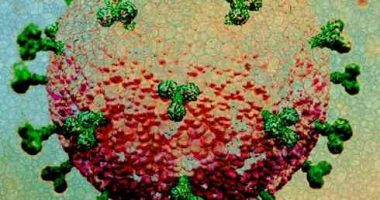New research delves into the neurological underpinnings of obsessive-compulsive disorder (OCD), pinpointing specific anomalies in the brain’s functional connectivity that may contribute to the condition. A recent study led by Jie He and colleagues, including Xun Li, Kangning Li, Huan Yang, and Xiaoping Wang, has explored the role of the putamen—a key cerebral structure often implicated in neuropsychiatric disorders—in OCD. The authors utilized advanced imaging techniques to investigate the differences in resting-state brain activity between individuals with OCD and healthy controls.
Using resting-state functional magnetic resonance imaging (rs-fMRI), the research team captured and analyzed data from 45 patients diagnosed with OCD alongside 53 healthy participants. By focusing on the amplitude of low-frequency fluctuation (ALFF) analysis of the putamen, the study examined both regional brain activity and broader connectivity patterns. Preliminary findings reveal a marked reduction in ALFF within the bilateral putamen of OCD sufferers. Furthermore, the right putamen exhibited reduced functional connectivity with various brain regions, notably with the left inferior frontal gyrus, which correlated negatively with the severity of obsessive symptoms.
This groundbreaking study not only underscores the putamen’s integral role in OCD but also opens new avenues for understanding the neurological pathways that underlie this complex disorder. The findings could potentially guide more targeted approaches in both the diagnosis and treatment of OCD, aiding millions affected worldwide.
Obsessive-compulsive disorder (OCD) is a debilitating mental health condition characterized by unwanted repetitive thoughts (obsessions) and irresistible behaviors (compulsions) which the sufferer feels driven to perform. According to the World Health Organization, OCD is one of the top 20 causes of illness-related disability for individuals aged 15-44 worldwide. Despite its widespread impact, the exact neurological underpinnings of OCD have remained elusive, complicating efforts to develop effective treatments.
Historically, OCD was treated as a purely psychological disorder, resulting from childhood experiences and personality issues. However, over the past few decades, the focus has shifted towards understanding the biological basis of the disorder. Advances in neuroimaging techniques have significantly contributed to this paradigm shift. Functional magnetic resonance imaging (fMRI), in particular, has become a crucial tool in this research by enabling detailed observation of brain activity in real-time.
The putamen, a structure deep within the brain, is part of the basal ganglia known for its role in regulating movements and influencing various learning processes. Previous studies have hinted at the involvement of the basal ganglia in OCD, particularly through its connections with the frontal lobe, which is responsible for executive functions such as decision-making and controlling impulses. Abnormalities in these areas could contribute to the compulsive behaviors and intrusive thoughts characteristic of OCD.
Building on this hypothesis, the research team led by Jie He aimed to further explore the putamen’s role by utilizing resting-state functional magnetic resonance imaging (rs-fMRI). This method of brain imaging allows researchers to examine brain networks in a resting or non-task-oriented state, which can provide insight into the inherent functional connectivity of the brain. The team’s use of the amplitude of low-frequency fluctuation (ALFF) analysis enabled them to measure the spontaneous brain activity’s local intensity, providing clues about the neurological differences between individuals with OCD and those without.
The significant findings of reduced ALFF in the bilateral putamen and its altered connectivity patterns with crucial areas such as the inferior frontal gyrus shed new light on the neural mechanisms that might underlie OCD. This link between the severity of obsessions and the connectivity of the right putamen to the left inferior frontal gyrus offers a possible explanation of how changes in brain function can lead to the manifestation of obsessive thoughts and compulsive behaviors.
The implications of these findings are twofold. For researchers, it provides a new avenue to explore specific brain circuits that could be targeted in OCD. For clinicians, understanding the neurological basis can lead to better diagnostic tools and more precise treatment interventions, such as neuromodulation techniques or targeted pharmacotherapy, potentially offering relief to millions who live with this challenging disorder. As research continues to unpack the complexities of OCD, leveraging advanced imaging technologies, the hope is that more effective and individualized treatments will emerge, transforming outcomes for patients worldwide.
In the study conducted by Jie He and colleagues, the methodology centered on the use of resting-state functional magnetic resonance imaging (rs-fMRI) to investigate brain activity differences between individuals diagnosed with OCD and healthy controls. This non-invasive imaging technique offers a dynamic approach to understanding brain function in the absence of task performance, allowing researchers to observe natural fluctuations in brain activity.
### Participants
The study involved a total of 98 participants, divided into two groups: 45 individuals diagnosed with OCD and 53 healthy controls. All participants were meticulously matched based on age, sex, and educational background to ensure consistency in data analysis. Prior to inclusion in the study, participants with OCD were evaluated using the Yale-Brown Obsessive Compulsive Scale (Y-BOCS) to confirm the diagnosis and assess symptom severity.
### Imaging Data Acquisition
Participants underwent rs-fMRI scans using a 3.0 Tesla MRI scanner. Scans were conducted while participants were instructed to rest quietly with their eyes closed, thinking of nothing in particular, and to avoid falling asleep. Each scan session produced a series of brain images capturing the spontaneous blood oxygen level-dependent (BOLD) signal fluctuations. The total scanning time was approximately 8 minutes per participant.
### Data Analysis
#### 1. **Amplitude of Low-Frequency Fluctuation (ALFF) Analysis**
– The primary method used in this study was ALFF, which quantifies the local intensity of spontaneous fluctuations in BOLD signals within a specific frequency range, typically between 0.01 and 0.08 Hz. This analysis was focused explicitly on the bilateral putamen regions pre-identified in the MRI scans.
– ALFF values for these areas were computed and compared between the OCD and control groups to identify any significant differences in brain activity.
#### 2. **Functional Connectivity Analysis**
– The study also explored the functional connectivity between the putamen and other brain regions. Correlation coefficients between the BOLD time series of the putamen and all other brain voxels were calculated to form connectivity maps.
– These maps were used to assess whether the connectivity patterns differed between the two groups and to determine how these patterns related to the severity of OCD symptoms.
#### 3. **Statistical Analysis**
– Group differences in ALFF and connectivity patterns were analyzed using independent t-tests. Correlation analyses were performed to explore the relationship between the connectivity of the putamen and the severity of OCD symptoms, measured by the scores on the Y-BOCS.
– The statistical threshold was set with multiple comparisons correction to minimize the risk of type I errors.
By using these rigorous imaging and analytical techniques, the researchers aimed to uncover specific neurological discrepancies relating to OCD, thereby contributing to a deeper understanding of the disorder’s underlying brain mechanisms. This methodology not only helps clarify the role of the putamen in OCD but also potentially directs future therapeutic strategies aimed at modulating this brain region.
### Key Findings and Results
The study conducted by Jie He and colleagues provided significant insights into the neuronal architecture of OCD, particularly highlighting abnormalities in the putamen. Here are the pivotal findings and their potential implications:
#### 1. **Reduced ALFF in the Bilateral Putamen**
– The analysis revealed significantly lower ALFF values in the bilateral putamen of participants with OCD compared to the control group. This indicates a reduced intensity of spontaneous brain activity in this region, suggesting that the putamen is less active at rest in individuals suffering from OCD. Such diminished activity could relate to impaired basal ganglia circuits, which are crucial for modulating motor function and behavioral responses.
#### 2. **Altered Functional Connectivity**
– One of the most crucial findings was the altered functional connectivity of the right putamen. The study found that in individuals with OCD, the right putamen had reduced connectivity with the left inferior frontal gyrus, a region involved in cognitive processes such as decision-making and response inhibition. This reduced connectivity was negatively correlated with the severity of obsessive symptoms; the weaker the connectivity, the more severe the symptoms.
#### 3. **Potential Neurological Pathway for Obsessive Symptoms**
– The negative correlation between the severity of obsessive symptoms and the diminished connectivity between the right putamen and the left inferior frontal gyrus offers a potential neurological substrate for the manifestation of OCD symptoms. This finding suggests that dysfunction in the neural circuits linking these areas may contribute directly to the emergence of obsessions and compulsions, reinforcing the hypothesis that OCD is strongly rooted in neurobiological factors.
#### 4. **Broader Network Disruption**
– Beyond the specific findings related to the putamen, the broader connectivity analysis underscored a disruption in the networks associated with the basal ganglia. Given the basal ganglia’s role in habit formation and procedural learning, abnormalities here could underpin the repetitive behaviors and the rigid, ritualistic acts observed in OCD.
### Potential Implications for Treatment and Diagnosis
These findings could shift the therapeutic strategies used to treat OCD. For instance, strategies that enhance activity in the putamen or improve its connectivity with the frontal regions might prove effective. Treatments such as transcranial magnetic stimulation (TMS) or targeted deep brain stimulation (DBS) could be adapted to focus more on these brain regions. Moreover, the distinct biomarkers identified in this study, such as reduced ALFF in specific neural regions, offer novel avenues for early diagnosis and the development of personalized medicine approaches.
Furthermore, the study enriches our understanding of OCD at a fundamental level, proposing that alterations in neural circuits are likely contributors to the pathology of OCD, rather than merely epiphenomenal manifestations of the disorder. This paradigm shift can help de-stigmatize OCD, framing it clearly as a disorder of brain circuitry, akin to neurological disorders.
### Conclusion
In conclusion, the research spearheaded by Jie He has delineated critical alterations in the functioning and connectivity of the putamen in individuals with OCD. By unraveling these specific neural discrepancies, this study contributes profoundly to our understanding of OCD’s etiology and opens up new empirical avenues for its treatment, promising better prognoses for individuals afflicted by this disabling condition. As we progress, these intricate insights into the brain’s operational anomalies stand to significantly refine our approach to neuropsychiatric disorders broadly, enhancing outcomes through scientifically-grounded interventions.
### Future Directions and Final Thoughts
A key takeaway from the study by Jie He and colleagues is the pivotal role advanced neuroimaging techniques can play in deciphering the complexities of psychiatric disorders such as OCD. As research progresses, the focus will likely shift towards integrating these findings with genetic, biochemical, and psychological data to create a holistic model of OCD. Future studies could explore longitudinal designs to observe how the neural signatures identified might fluctuate with the progression of the disorder or in response to treatment.
Further research is required to expand on these findings in larger and more diverse populations. This includes examining the potential genetic predispositions that may affect the putamen’s activity and connectivity, thereby influencing OCD symptoms. Research should also consider environmental factors such as stress and trauma, which could exacerbate or mitigate these neural anomalies. Understanding these factors can lead to more tailored therapeutic approaches, potentially improving patient outcomes.
Technologies like machine learning could also be employed to analyze the vast amounts of data collected through rs-fMRI, potentially identifying patterns that may not be visible to the human eye. This could lead to the development of predictive models for OCD severity based on brain imaging, offering a powerful tool for early diagnosis and intervention.
Innovative treatment strategies should also be explored, focusing on enhancing the functionality of the putamen or correcting the connectivity issues identified. Neuromodulation techniques, such as TMS and DBS, already offer promise in this regard but could be further refined based on these specific neuroimaging insights. Pharmacological approaches that target the biochemical pathways influenced by the putamen’s activity could also be developed, providing more effective treatments with fewer side effects.
Importantly, the findings from this study should be communicated to the broader medical community and the public to enhance understanding of OCD as a neurobiological disorder and combat stigma. Enhanced public awareness can lead to increased support for individuals with OCD, encouraging them to seek help earlier in the disease process, which can significantly improve prognosis.
Finally, given the broader applicability of these neuroimaging techniques, similar methods could be applied to other neuropsychiatric and neurodevelopmental disorders. By doing so, the field of neuroscience can build on the interconnected knowledge of various brain disorders, facilitating a comprehensive understanding that may cross diagnostic boundaries. This could potentially lead to breakthroughs not only in treatment options but also in prevention strategies for a range of neurological and psychiatric conditions.
In conclusion, the research initiated by Jie He’s team marks a significant step forward in our understanding of OCD. By building upon these findings with interdisciplinary, innovative, and patient-focused research, the scientific community continues to advance towards more effective interventions and a better quality of life for individuals living with OCD and other related disorders. As neuroscience edges closer to unraveling the complex architecture of the human brain and its functions, the hope is for a future where mental health conditions are no longer seen through a lens of mystery, but rather as comprehensible and manageable aspects of human health.









